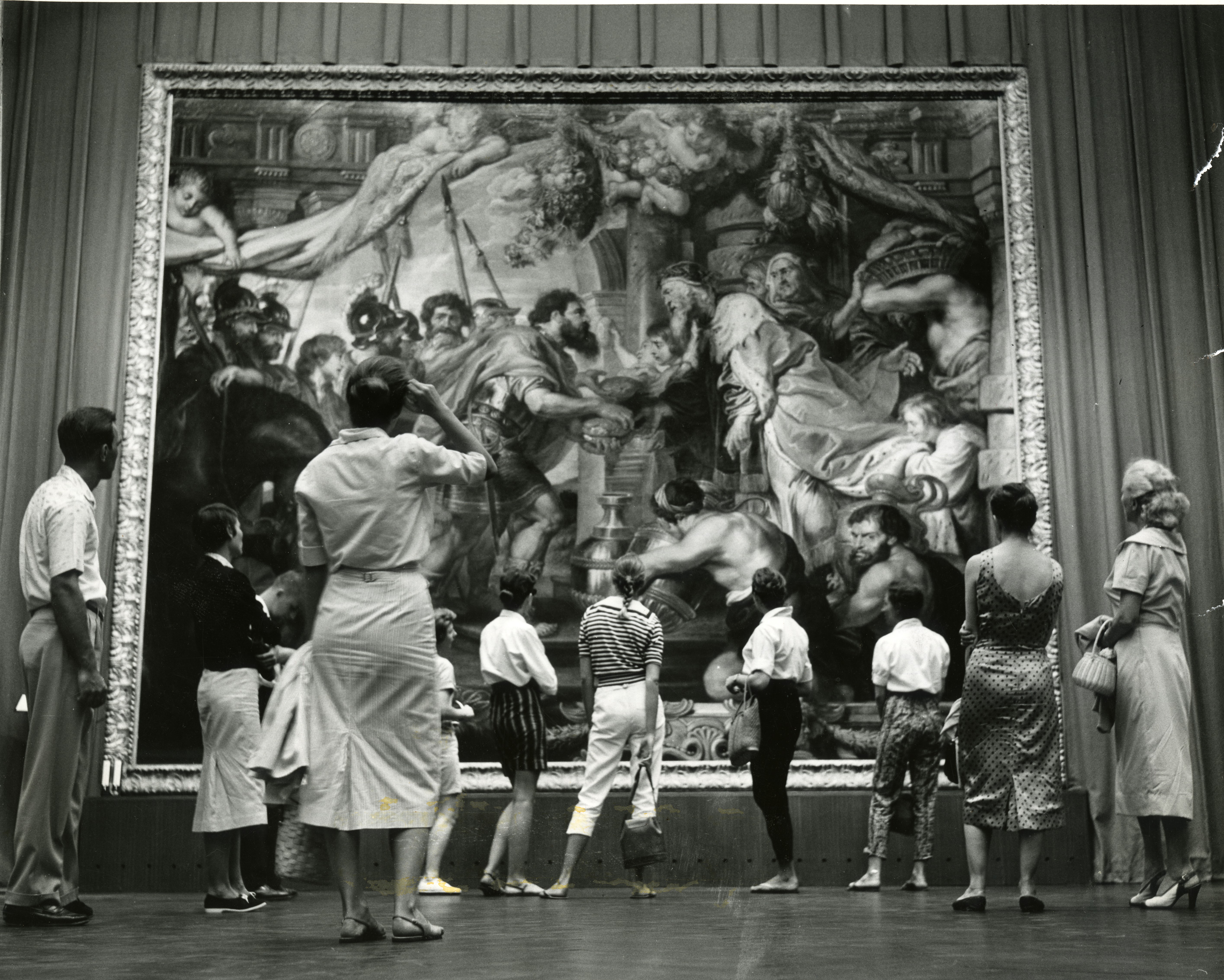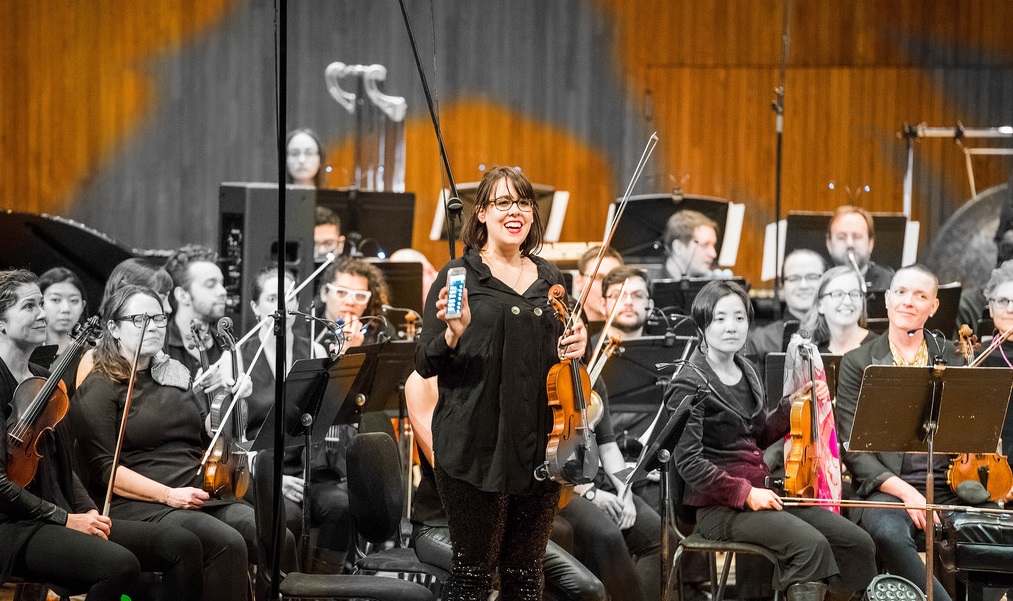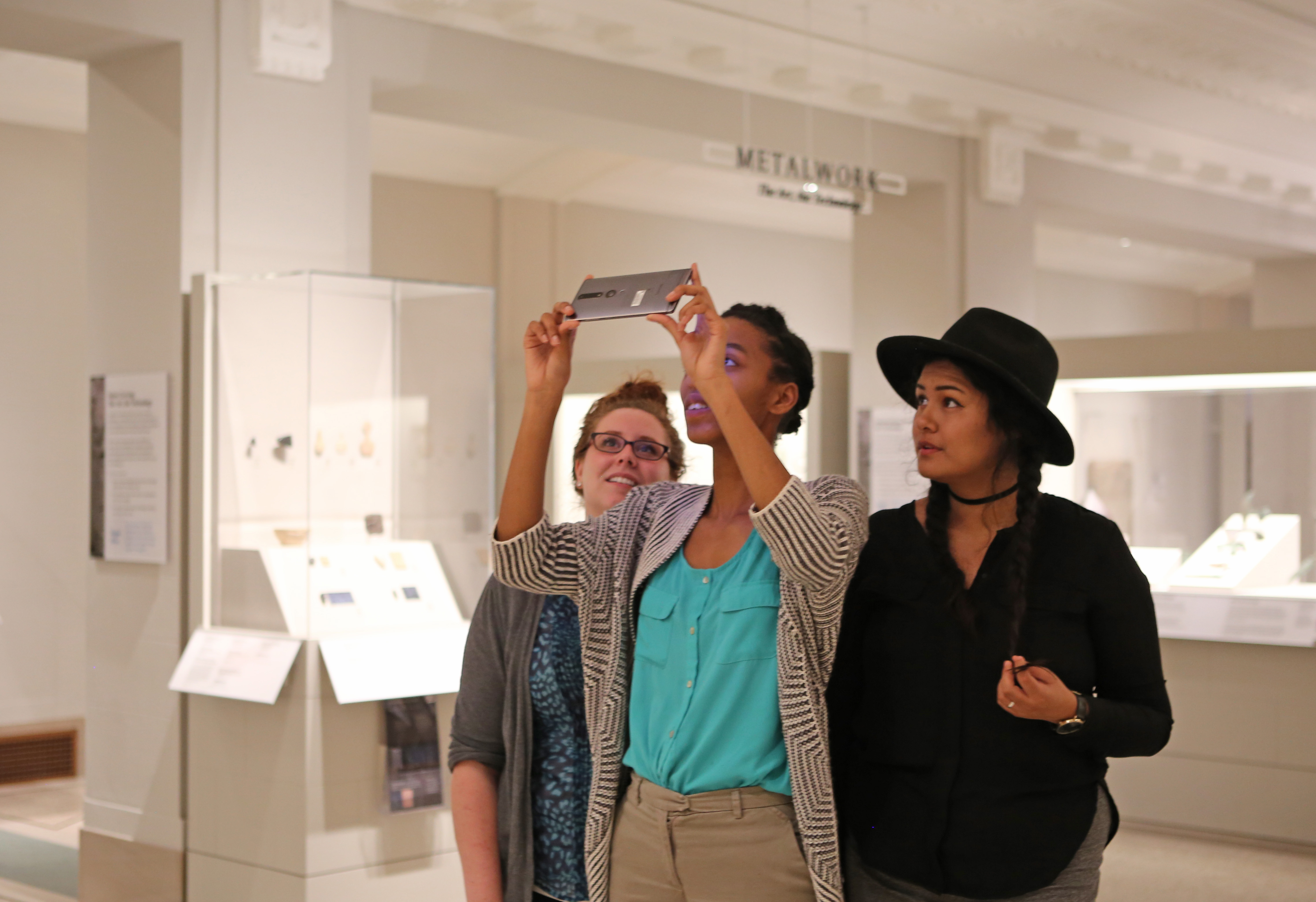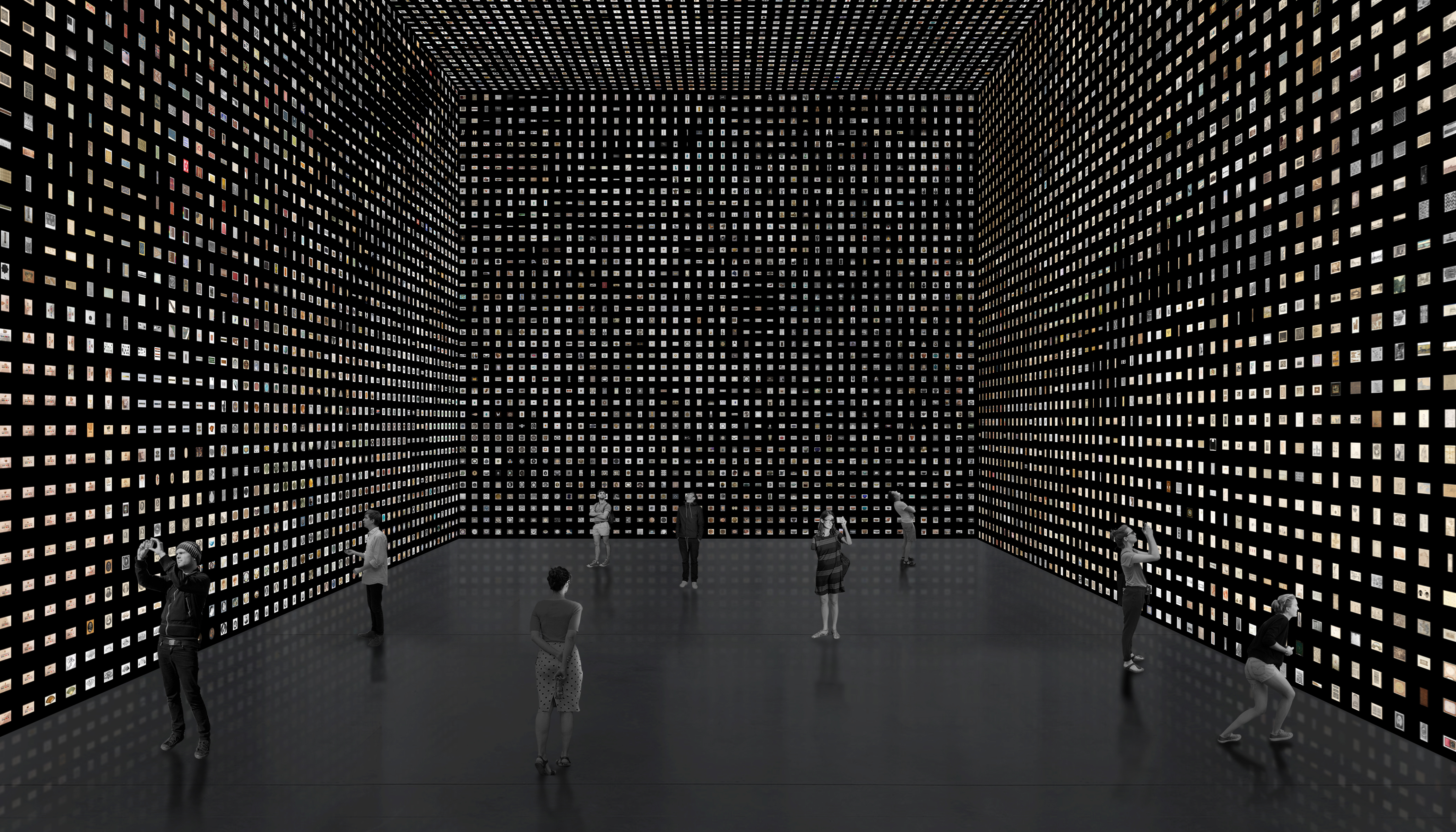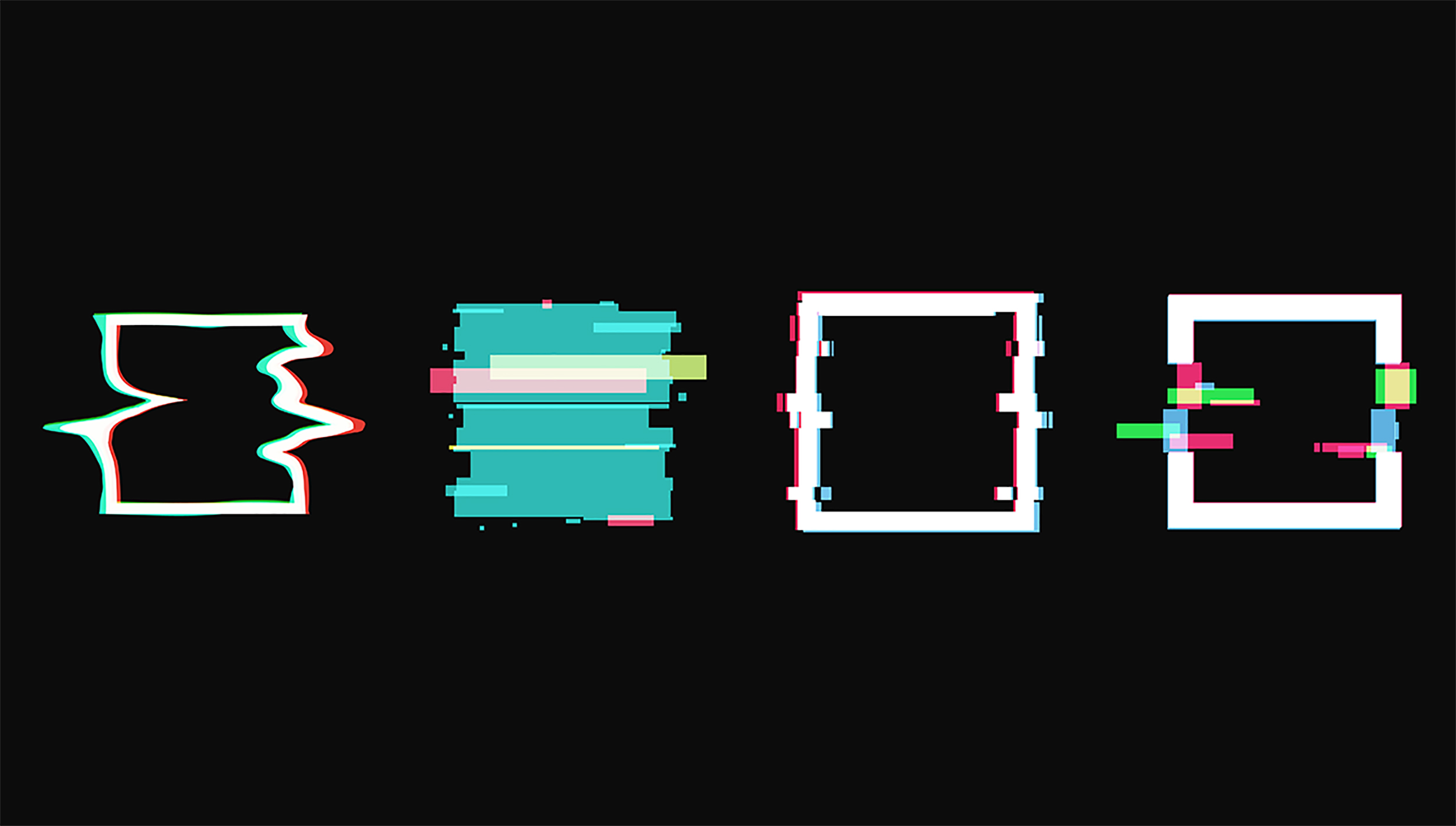
A call for ideas: Immersive technology in the arts
On July 27, Knight Foundation opened a new call for ideas exploring how arts institutions can present immersive experiences to engage audiences. Knight’s Chris Barr shares details below. See the press release here.
It used to be the case that immersive technology (such as virtual and augmented reality) was on the fringe of the arts field.
For example, when I was an undergrad arts student in the early 2000s, I worked at a virtual reality laboratory at West Virginia University. The lab was connected to the computer science and engineering programs, and I was the lone art major working alongside engineers.
We were exploring projects focused on 3D laser scanning, haptic interfaces (enabling humans to interact with a computer through physical sensations and movements), and sonification (when data is translated into sounds to convey information). I was supporting that work with graphics and web design.

(A graphic created by Chris Barr as an undergraduate student in 2001 for the WVVEL website, via the Wayback Machine)
Back then, the lab’s website described virtual reality as “a relatively new cool field in computer science which allows an experience of 3-D objects…”
It was a time when expensive computers were being used to run 3D graphics (and occasionally engage in after-hours video gaming tournaments).

(A screenshot of the lab’s website in 2001, via the Wayback Machine)
So, as the hype bubble grew in recent years around immersive technology, I was somewhat of a skeptic. I mean, I’ve been waiting for this technology to catch on and be available beyond university walls for 20 years! But recent experiences at film festivals and art spaces have energized me. This technology is now widely available, and artists, creators and storytellers are using it to make experiences that go beyond demo mode and into deep, meaningful creative works. It’s finally here!
Advancements in immersive technology are creating new opportunities to blend physical and digital worlds. From digital overlays of museum spaces and VR interpretations of surreal landscapes, to artistic interpretations of climate change and digital recreations of fragile Cuban sculpture, artists, museums and other arts institutions are experimenting with these emerging technologies.
Last year, Knight Foundation ran an open call for ideas focused on using technology to connect people to the arts. Nearly a quarter of the 900+ applications we received for that opportunity focused on the use of virtual or augmented reality. There is enthusiasm in the arts sector for these technologies, but there is still a lot to learn about how they get deployed in cultural spaces.
“Advancements in immersive technology are creating new opportunities to blend physical and digital worlds.”
Through our work in arts and technology, Knight is committed to exploring how cultural institutions adapt to a changing world. We believe technology can be an enabler for building and deepening relationships with audiences. It can help us meet people where they are. And technology can offer new ways for organizations to share their missions, values and artistic excellence with the world.
For arts organizations, immersive technologies offer new ways to inspire audiences. And for many people, it’s through the arts that they will have their first rewarding mixed-reality experiences. As we move quickly into this near-future, Knight is offering support for projects that demonstrate innovative approaches to this broad question:
In what new ways might arts institutions engage audiences through immersive experiences?
Beginning on July 27, we are opening a call-for-ideas from cultural organizations, technologists and others who are working to use immersive technology in the arts. We hope to find innovative uses for this technology, new approaches for moving audiences through these experiences, and opportunities to engage new and diverse audiences.
How can these technologies help us reach new people? How do we make the experience before, during and after putting on a headset delightful? How do we service these experiences efficiently? How should these experiences be distributed and exhibited? How can this new form of storytelling be used for more inclusive stories? How can we use immersive tech to expand the reach of the arts beyond physical locations?
“For arts organizations, immersive technologies offer new ways to inspire audiences.”
Grant recipients will be awarded a share of a pool of $750,000 in funding and receive mixed-reality mentorship and technology support from Microsoft.
We are looking for ideas from arts institutions, as well as technologists, companies and artists who are partnering with arts institutions. Our focus is on art museums, performing arts organizations and other spaces where art is presented. We encourage technologists, artists and others to partner with an arts organization, in order to test the approach with an audience and institutional workflows.
You can find full guidelines and apply starting July 27 at kf.org/arts.
Our informational webinar on July 30 is full. Sign up here to be notified when another informational webinar is available.
Click here to sign up for updates about our arts technology work, including this new call for ideas.
Chris Barr is director for arts and technology innovation at Knight Foundation. You can follow him on Twitter at @heychrisbarr.
-
Arts / Press Release
-
Topic
-
Arts / Article
-
Arts / Article
-
Arts / Press Release
-
Arts / Press Release
-
Arts / Press Release
Recent Content
-
Artsarticle ·
-
Artsarticle ·
-
Artsarticle ·


